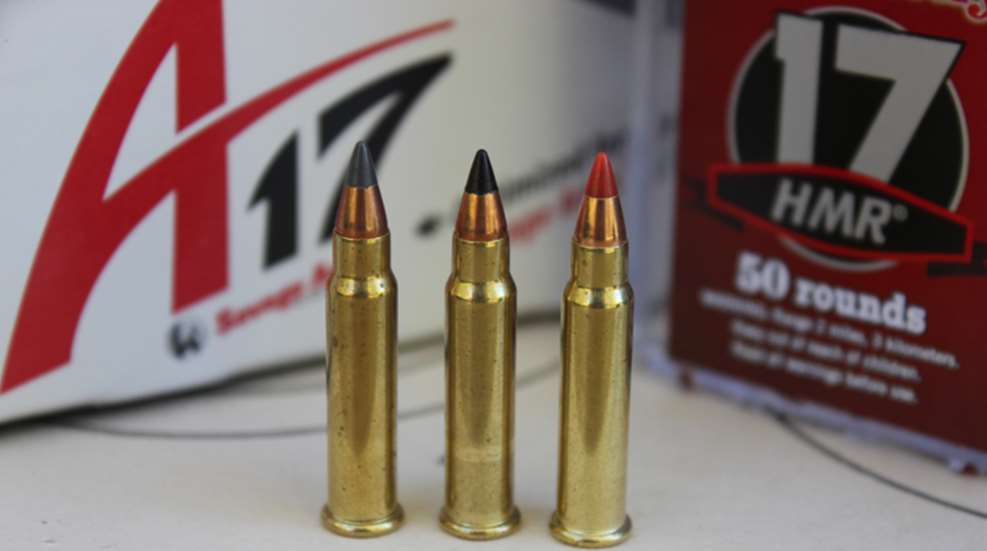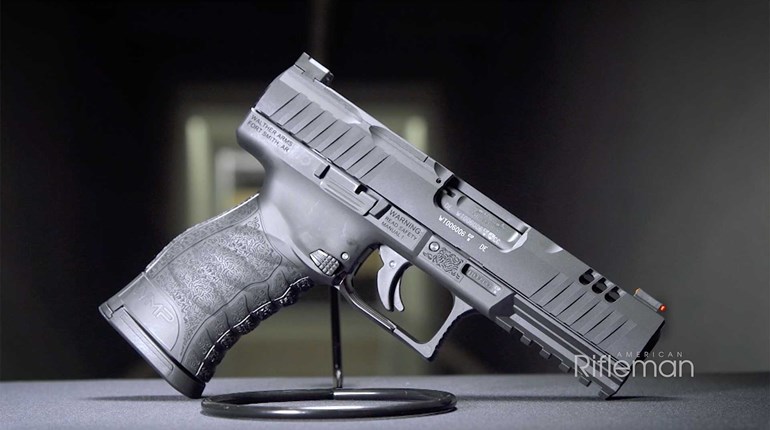
Like many shooters, I started off plinking cans and punching paper targets with a rimfire .22 Long Rifle when I was a kid. That first rifle—an aged single-shot with rough iron sights and a short stock—became the gun that served to teach me the fundamentals of accurate shooting and safe firearm handling. And although I no longer have that little rifle I still keep several rimfire handguns and rifles on-hand. In fact, I have more rimfires than centerfires and shotguns combined. Why? Because they’re fun and affordable to shoot, and they help me become more proficient with larger firearms.
A few years ago, rimfire ammo stocks were all but dried up and the remaining ammo on store shelves wasn’t cheap. But supply has largely caught up with demand and the rimfire is once again a great option for every shooter, new or experienced, and here’s why:
1. Rimfires Are Great for New Shooters:
By their very design, rimfires aren’t capable of delivering the punch of larger, more powerful centerfire loads. This, in turn, means less recoil and muzzle blast, which makes them a great option for new shooters. The growing number of CCW permit holders has brought many novice shooters into the fold of gun ownership, and the hefty punch of a .45 ACP pistol or a .30-06 hunting rifle can be off-putting to these rookie shooters. Rimfires, on the other hand, are more mild, and that reduction in recoil, gun weight and muzzle blast makes them easier for new shooters to master (although hearing and eye protection are still important). Novice shooters can then focus their attention on what’s really important—learning to safely handle firearms, sight alignment, basic operation—without being intimidated by large-caliber guns. Even the most recoil-sensitive shooter can handle the setback of a .22 or .17 rimfire, and they will develop basic gun handling skills more quickly.
2. Rimfires Are Great Training Aids:
I have a rimfire .22 bolt-action rifle that I shoot to help reinforce the basic principles of marksmanship, and firing .22 rounds is far less costly than going through a box or two of premium centerfire hunting ammunition. Big guns can cause a flinch—in fact, many shooters develop a flinch that robs them of accuracy without even knowing that there’s an issue. But my rimfire allows me to practice trigger control, sight alignment, follow-through and all of the other key components of accurate shooting without worrying about getting thumped by heavy recoil. And, if you happen to develop a flinch, a session shooting rimfires is the best way to regroup and remedy this problem.
These guns aren’t just great training tools for hunters, though. A number of companies now offer rimfires that mimic larger centerfire pistols for increased low-volume, low-recoil practice with your primary defensive weapon. Kimber offers a .22 version of their larger centerfire 1911s, and guns like the Walther PPQ 22, Smith &Wesson M&P Compact .22 and the SIG Sauer Mosquito are rimfires that replicate the grip, trigger, operation and firing controls of these brands’ larger centerfire guns. It’s easy to take one of these .22 versions, spend a few hours perfecting your skills at the range, and move directly into their larger counterparts.
3. Rimfires Are Versatile:
Rimfires don’t get a lot of press for versatility, and that’s a shame because these little guns can do a lot. In recent years the .17s have seen arise in popularity, and these include the .17 HMR, .17 Hornady Mach 2 and .17 Winchester Super Magnum. The .17 HMR is a low-recoiling round that is available in a number of bolt-actions as well as the new Savage A17 semiauto, and it makes a great small-game and varmint caliber. The .17 Hornady Mach 2 is another mild small-game cartridge that has a very flat trajectory out to 100 yards or even more. Both of these are good for squirrels, rabbits and fox, and the new .17 Winchester Super Magnum is the fastest rimfire ever produced, sending a 20-grain bullet down the barrel at 3,000 feet per second, making it a flat-shooting rifle for game up to and including coyotes.
There are a variety of options in .22 rimfires—the most popular (and most available) of which is the .22 Long Rifle (.22 LR). It’s a fabulous small-game and pest-control gun, great for taking squirrels and rabbits at moderate ranges. But the .22 LR is also a competition gun, and there are a number of rimfire target matches around the country for those with a competitive streak. For more power there’s the .22 WMR, which is available in both rifles and pistols, and it makes a better hunting cartridge for larger predators like fox, bobcats and coyotes at moderate ranges (plus, it doesn’t damage valuable pelts like other, more powerful centerfires can). The .22 Magnum is even being carried by some people for self-defense, and to that end Hornady is now offering a .22 WMR load in their Critical Defense line with a 45 grain FTX bullet.






































